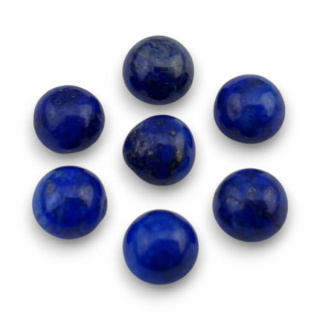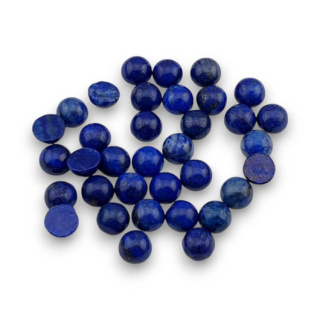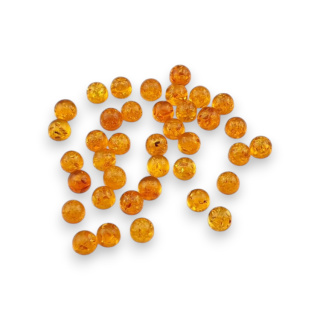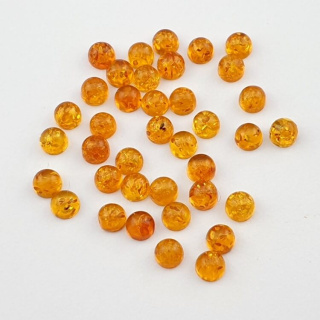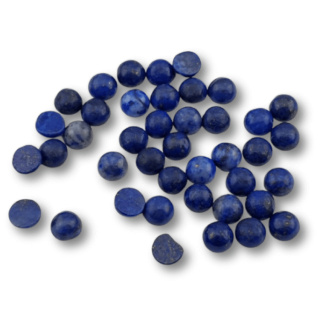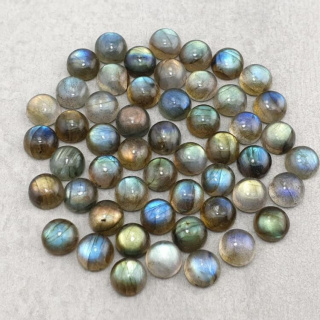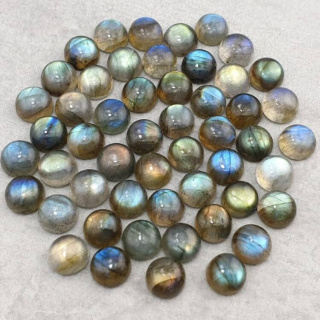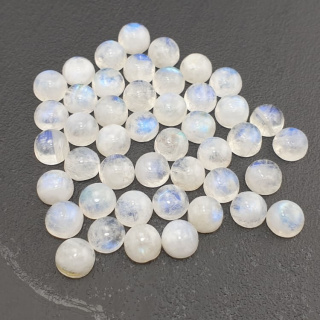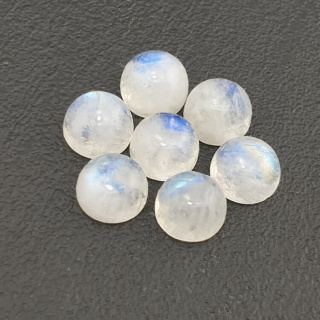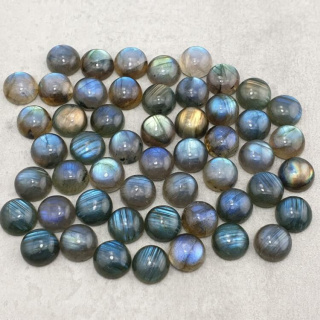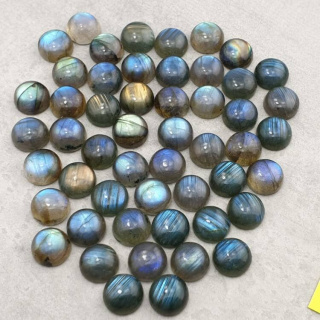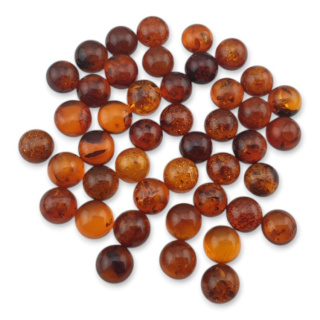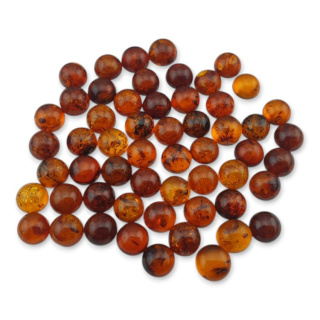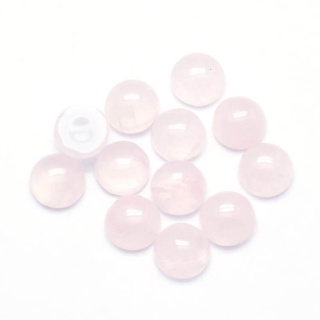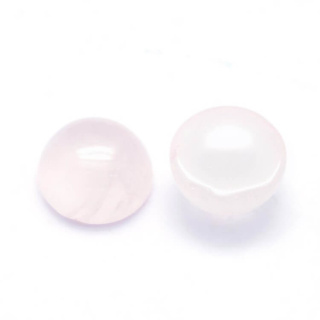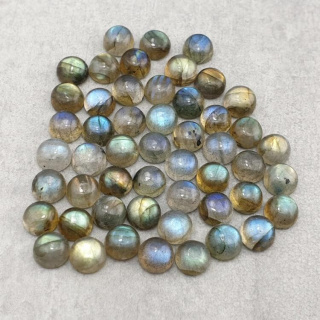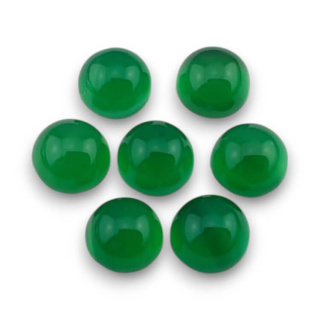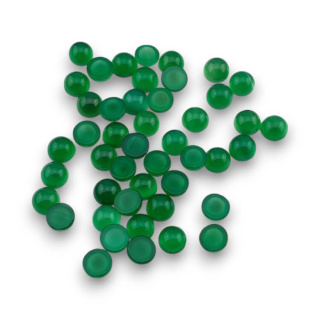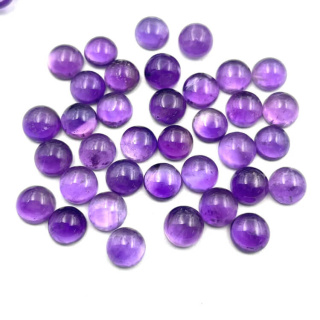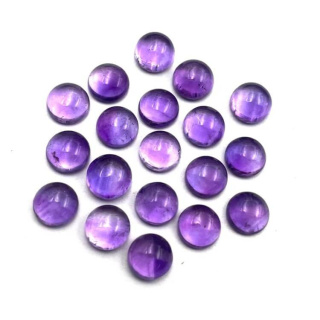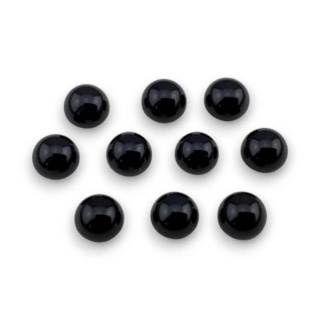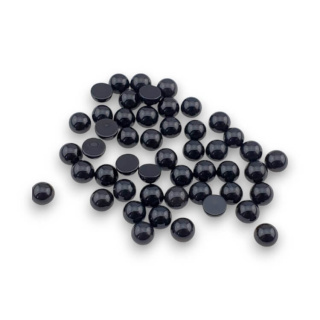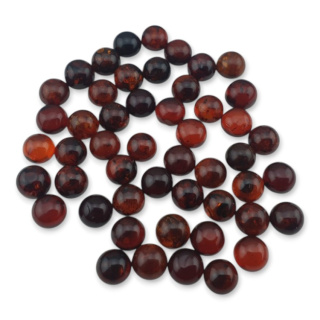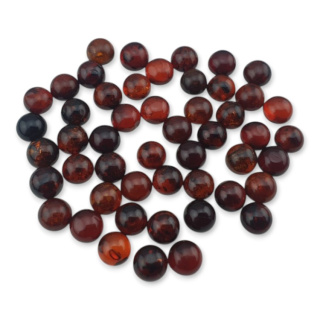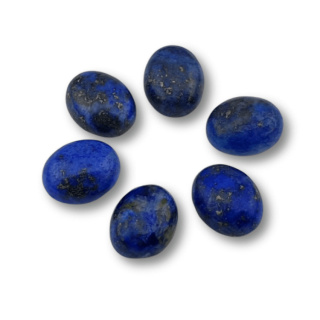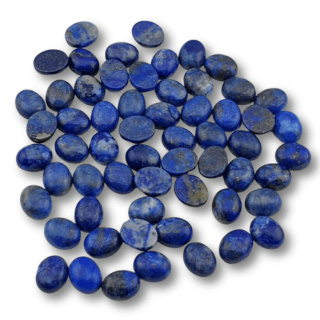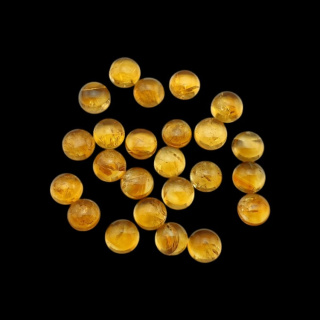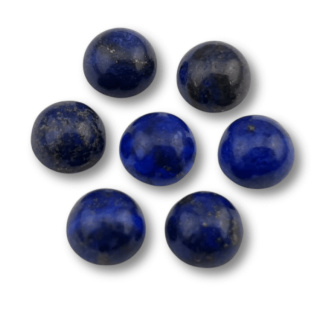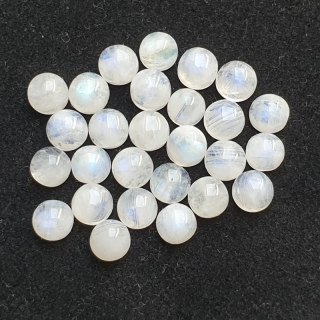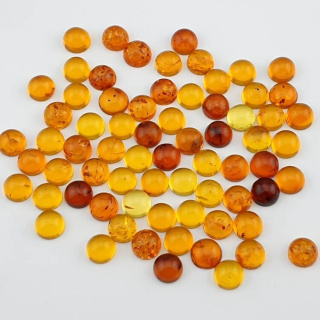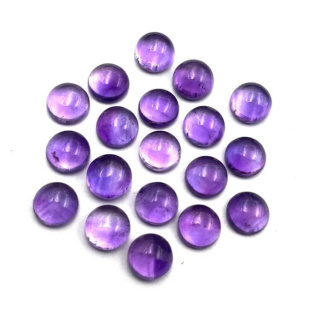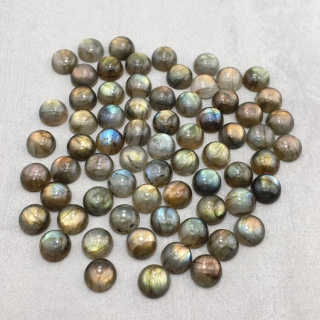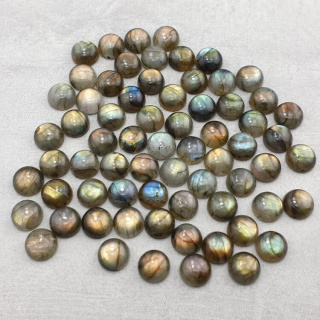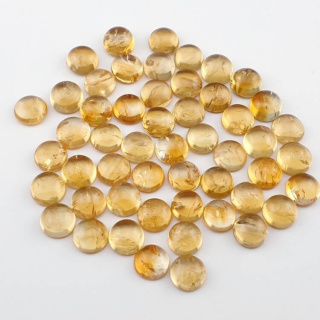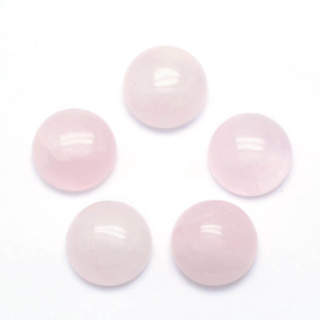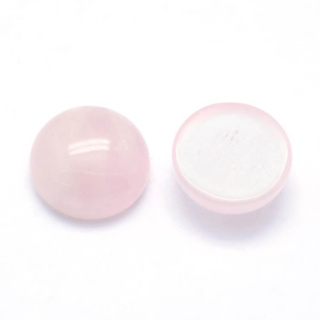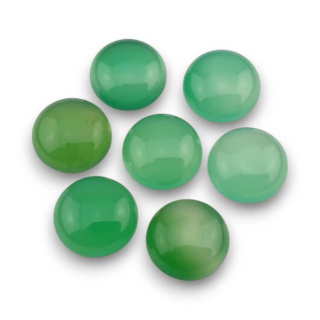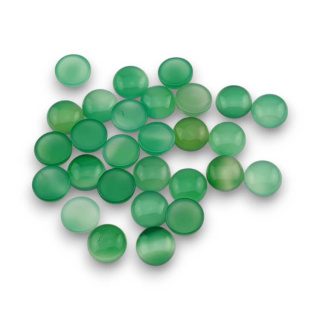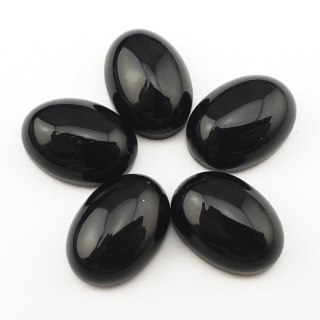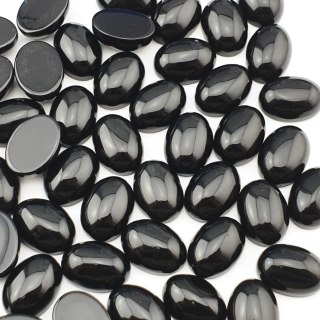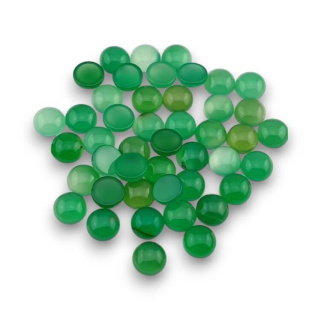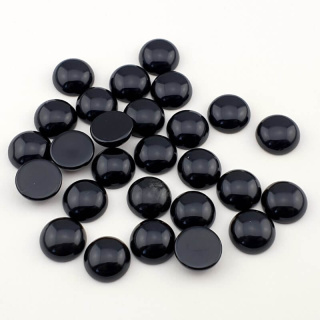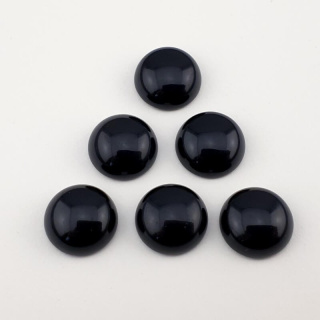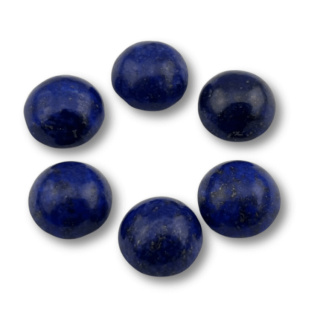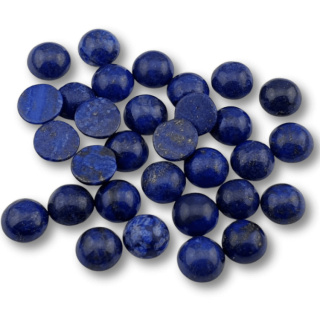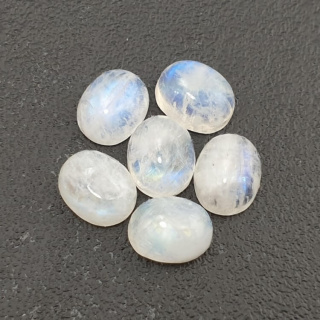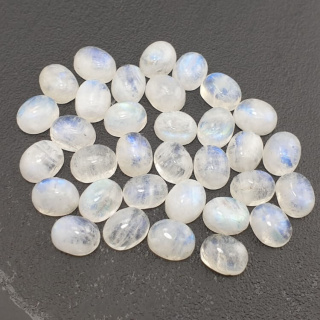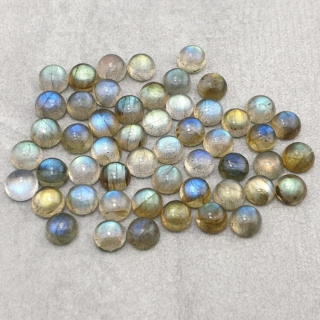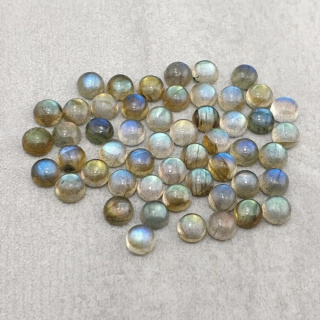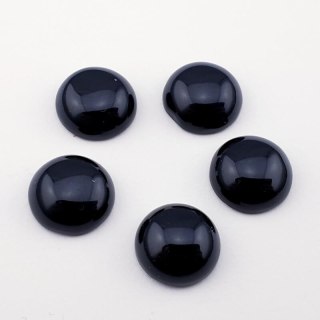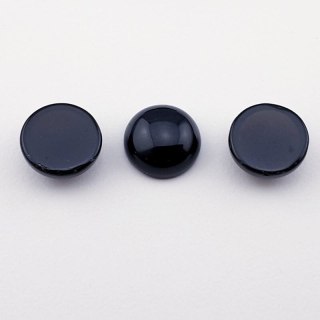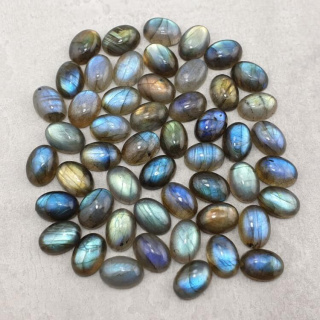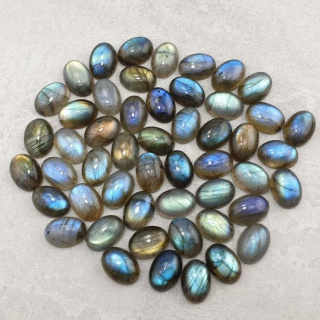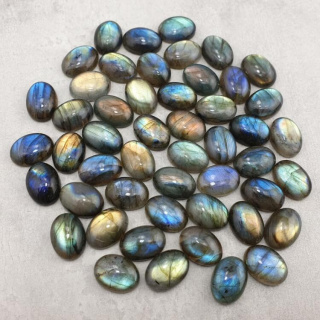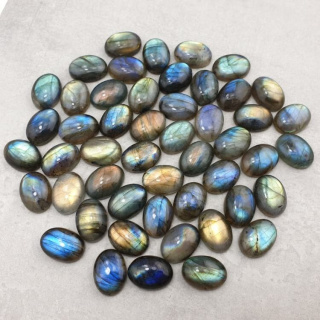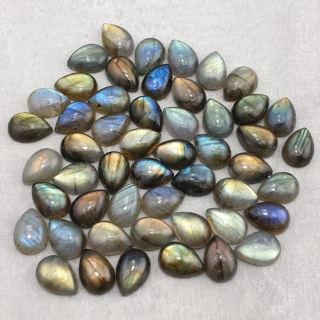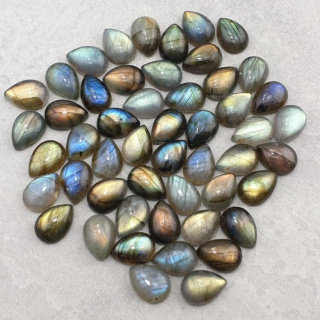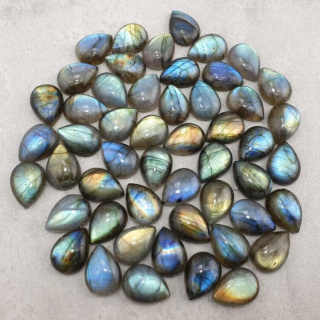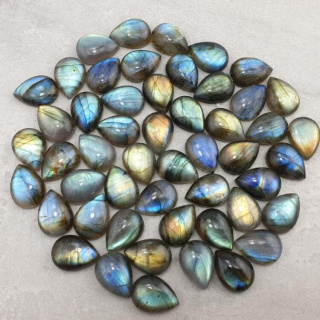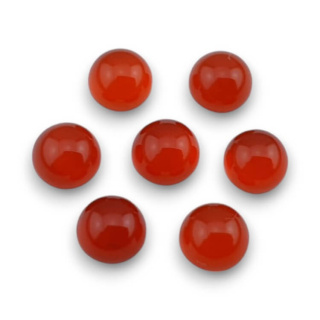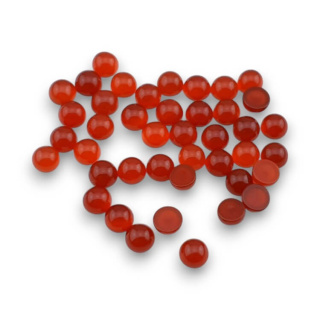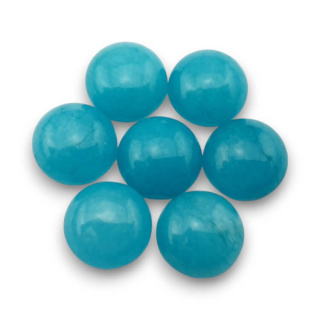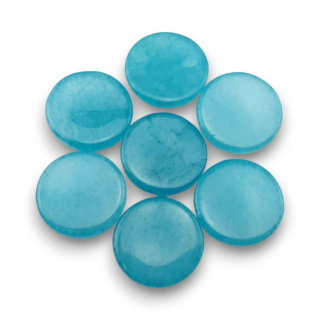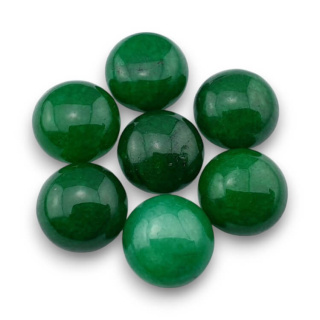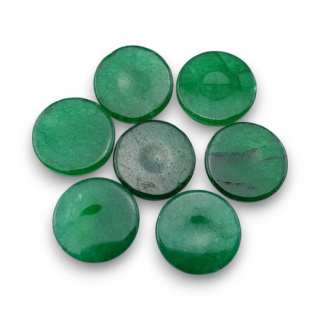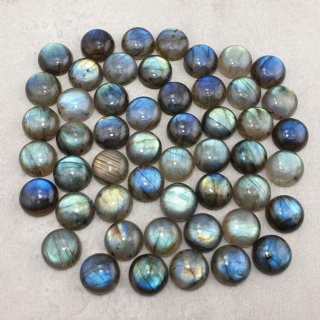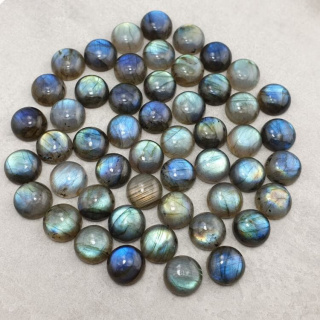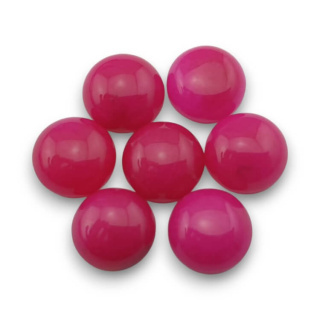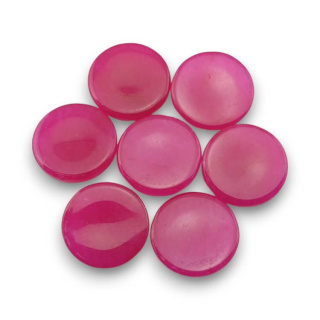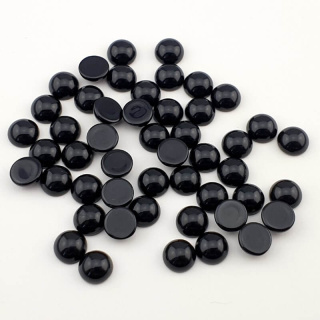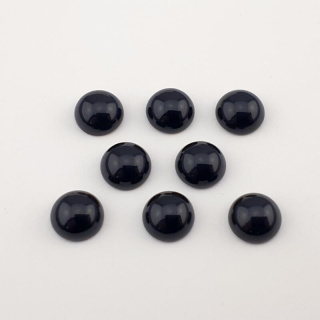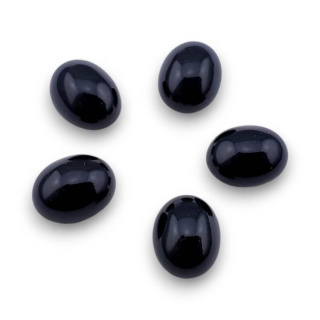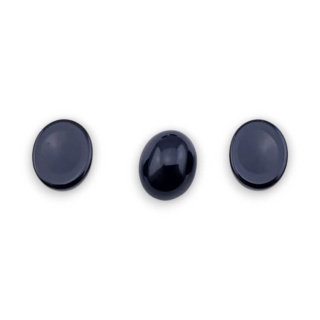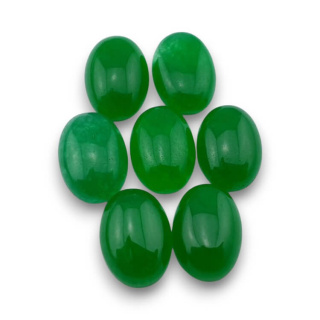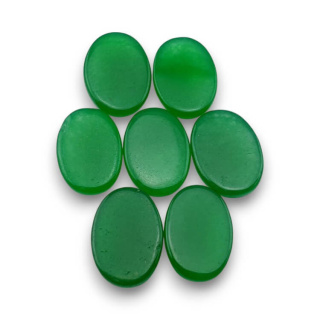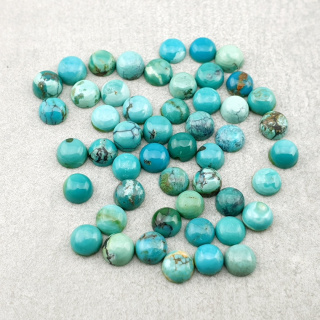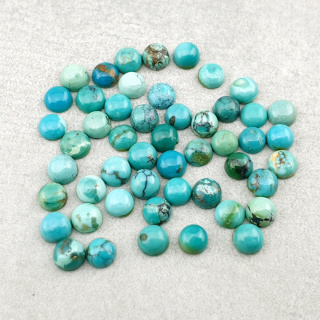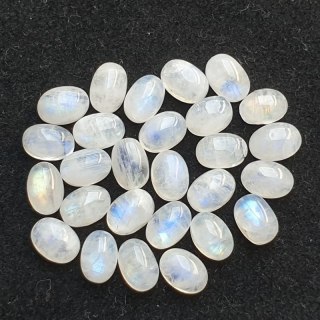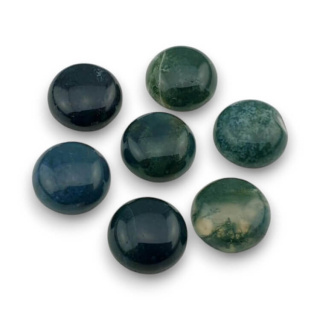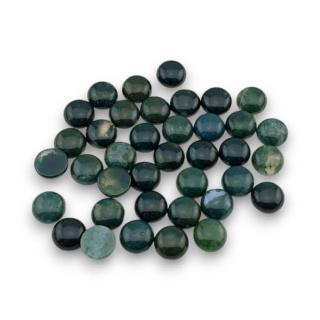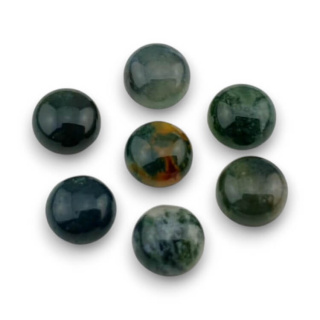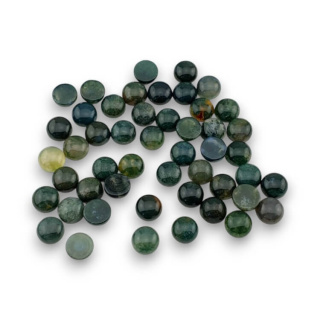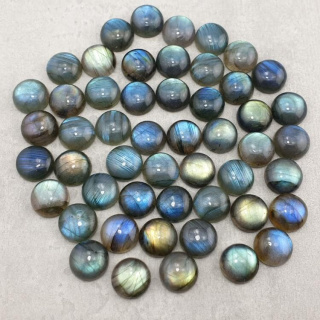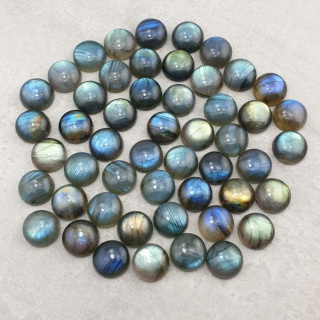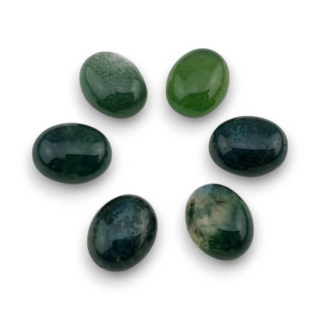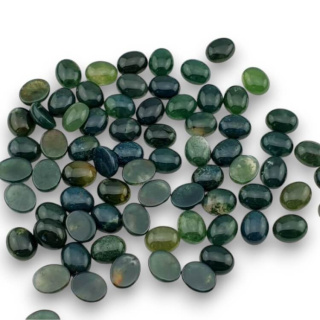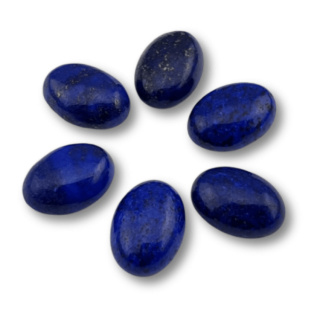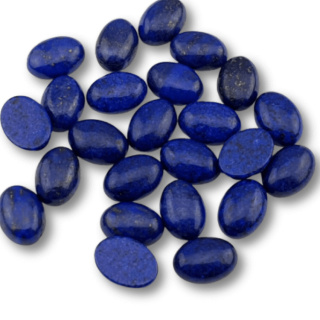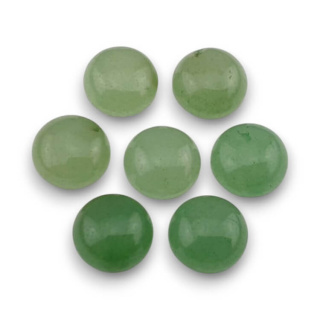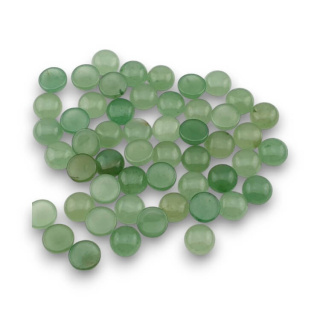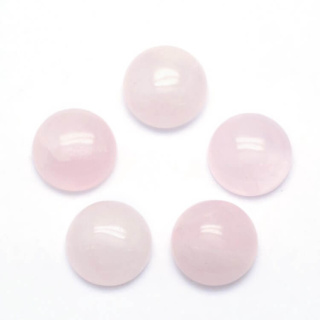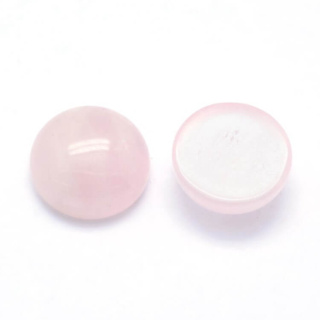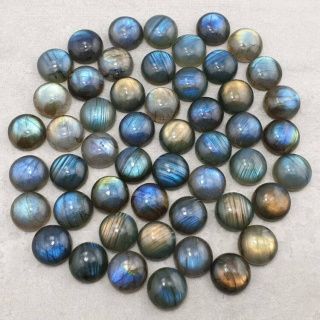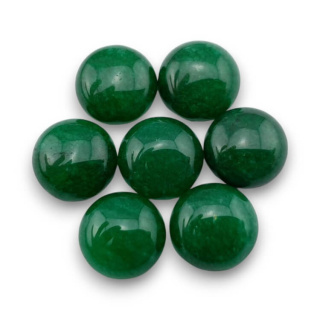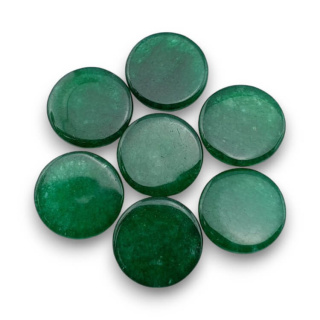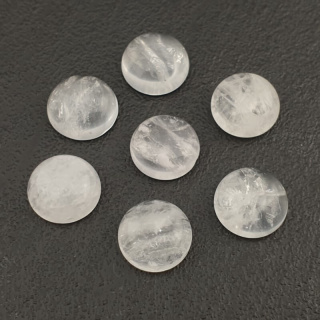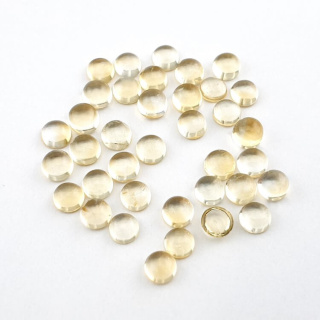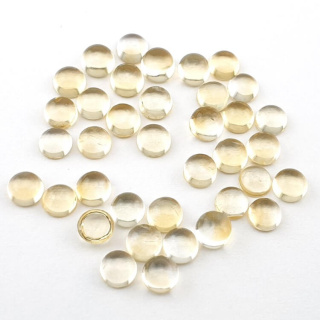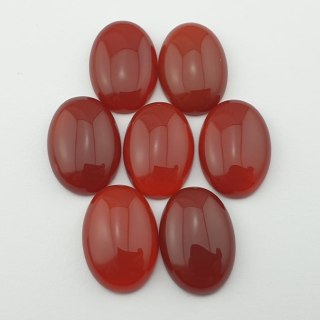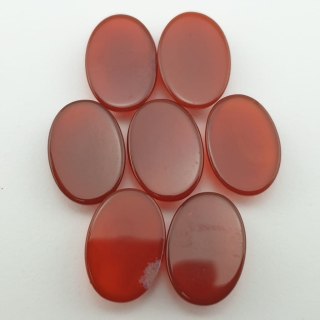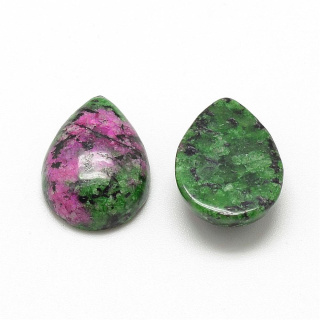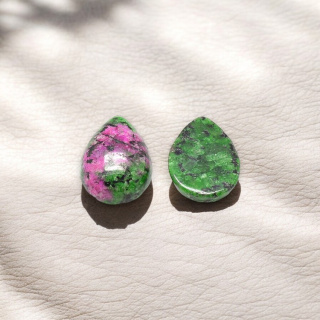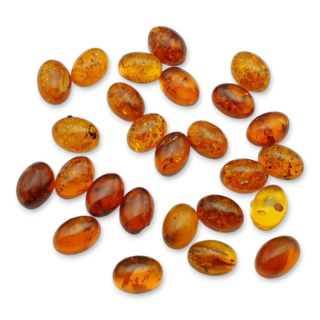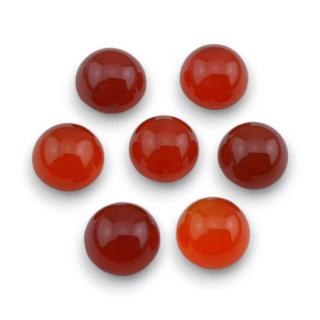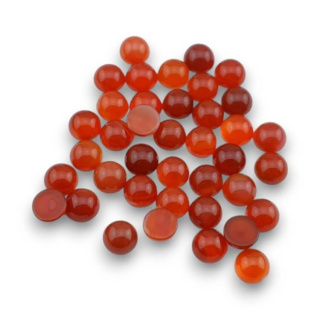Kaboszony do biżuterii | Największy wybór indywidualnych okazów
Liczba produktów: 6988Kaboszony do biżuterii z kamieni naturalnych to nasza domena. W naszym sklepie internetowym znajdziesz najszerszy w Polsce wybór niepowtarzalnych, indywidualnych kaboszonów, wykonanych z najwyższej jakości kamieni.
Oferujemy kaboszony kamieni o różnych kształtach, wielkości i kolorach, które idealnie nadają się do tworzenia unikalnych projektów biżuterii. Zapewniamy szybką i bezpieczną wysyłkę, a nasz zespół zawsze służy fachową radą i pomocą w wyborze odpowiednich kamieni dla Twojego projektu.
Sprawdź naszą ofertę już dziś i stwórz swoją wymarzoną biżuterię z naszymi kaboszonami kamieni.
Co to jest kaboszon?
Kaboszon to kamień będący dziełem szlifierza przeznaczony do wyrobu biżuterii. Definicja kaboszonu odnosi się do wysoko polerowanego kamienia z wypukłą lub zaokrągloną górą, spód kaboszonu jest płaski, a kształt kaboszonu owalny, pozbawiony ostrych krawędzi.
Kaboszony mogą być wysoko kopułowe, nisko kopułowe, rzeźbione, z wierzchołkiem lub płaskie. Szlif kaboszonowy jest zwykle stosowany, gdy kamień jest półprzezroczysty lub nieprzezroczysty. Lepiej sprawdza się w przypadku bardziej miękkich kamieni oraz kamieni, w których występuje zjawisko chatoyancy (Tygrysie Oko) lub schiller (Labradoryt).
Wśród kaboszonów znajdziemy nie tylko różne typy kamieni. Mogą być wycięte np. z drewna, szkła, plastiku, żywicy, starych talerzy, kręgli, muszli, kości itp.
Kaboszon to forma kształtu, która wydobywa naturalne piękno kamieni. Te formy kamienia są wykorzystywane do wykonywania biżuterii i znajdziemy je w wisiorkach, bransoletkach, broszkach i pierścionkach, a w dopasowanych parach w kolczykach.
Szlif kaboszonowy charakteryzuje płaski spód, przez co łatwo się je oprawia. Można też kaboszony wkleić bezpośrednio do przedmiotów. W historii kaboszony były używane do ozdabiania mieczy, koron, a nawet ubrań.
Kaboszony mogą być osadzane w metalach szlachetnych za pomocą wielu technik, w tym odlewania na wosk tracony. Można je owijać drutem, haftować lub inkrustować.
Kaboszony występują też w innych formach:
- Intarsja - gdzie kawałki o podobnej grubości są cięte i kształtowane tak, by ściśle do siebie pasowały, bez odstępów i przerw, tworząc wzór.
- Intaglio - klejnot wyrzeźbiony w negatywnym reliefie.
- Cameo - klejnot wyrzeźbiony w reliefie pozytywnym.
- Doublet (lub Triplet) - cienka warstwa kamienia jest przyklejona do innej. Jest to często spotykane w opalach australijskich.
- Szlif górny - klejnot, który ma obły kształt na górze, ale ma fasety wycięte na dole.
- Szlif fantazyjny - kamienie szlachetne cięte w fantazyjne obłe kształty, takie jak kwiaty, liście, gwiazdy, latawce itp.
- Naturalne kaboszony - naturalne kaboszony, które mogą pozostawać częściowo nieoszlifowane.
- Kaboszony niekamienne - kaboszony wykonane z innych materiałów, takich jak kaboszon drewniany, plastik, porcelana, szkło itp.
Słownik pojęć związanych z kaboszonami kamieni
- Botryoidalny lub bąbelkowy - oznacza "kiść winogron" i jest używany do opisania kaboszonu, który ma wyboistą lub przypominającą winogrona powierzchnię.
- Brecciated - kamień szlachetny składający się z fragmentów różnych minerałów w matrycy.
- Kaboszon - (zazwyczaj) kamień półszlachetny szlifowany do celów jubilerskich.
- Lapidariusz - to ktoś (osoba), kto tnie i szlifuje kamienie.
- Kalibrowany - Kiedy kamień szlachetny jest cięty do określonego, standardowego rozmiaru.
- Chatoyant/Chatoyancy - to połyskliwy efekt kociego oka widoczny w niektórych kamieniach szlachetnych i minerałach.
- Dendryty, pióropusze, mchy/mszysty - używane do opisania tworzenia się inkluzji w kamieniu szlachetnym, zwykle agacie. Dendryt oznacza drzewo, pióropusz jest zwykle pierzasty, a mech... wygląda jak mech.
- Druzy - to warstwy kryształów, które utworzyły się w zagłębieniu skalnym.
- Skaza - to niedoskonałość w kamieniu szlachetnym lub skale. Skazy obejmują: pęknięcia, wyszczerbienia lub "wgniecenia" oraz niektóre naturalne inkluzje lub pęknięcia.
- Skamielina - termin skamielina odnosi się do wszelkich zachowanych szczątków lub odcisków żywego organizmu, takich jak kość, muszla, odcisk stopy lub odcisk liścia.
- Pęknięcie - pęknięcie w kamieniu szlachetnym lub skale, które może być naturalne lub powstać w wyniku działalności człowieka.
- Freeform - kaboszony mogą mieć też kształty nieregularne, np. mogą odzwierciedlać kształty zwierząt, liści itp.
- Twardość - twardość minerałów w skali Mohsa określa odporność różnych kamieni szlachetnych na zarysowania w skali od 1 do 10.
- High Grade - High Grade oznacza materiał wysokiej klasy, a w kolekcji minerałów oznacza wyselekcjonowanie najlepszych okazów.
- Mine Run - Określenie "Mine Run" oznacza zazwyczaj, że materiał jest sprzedawany w stanie, w jakim wyszedł z kopalni.
- Iryzacja/Labradorescencja - kaboszon ma wiele połyskujących, zmieniających się kolorów. Iryzacja lub labradorescencja jest spowodowana rozproszeniem światła w pęknięciach i skazach, co skutkuje tęczową grą kolorów. Kolory zmieniają się wraz ze zmianą kąta patrzenia.
- Inkluzja - inkluzja to cząstka obcej materii znajdująca się w minerale lub kamieniu szlachetnym. Inkluzje mogą być stałe, ciekłe lub gazowe. Kieszonka wypełniona wodą nazywana jest enhydro. Inkluzje organiczne występują tylko w bursztynie.
- Połysk - wygląd powierzchni kamienia szlachetnego spowodowany odbiciem światła. Najczęściej spotykany jest szklisty (glassy), najbardziej pożądany jest adamantynowy (diamond like). Inne rodzaje to: metaliczny, perłowy, jedwabisty, woskowy i matowy.
- Matryca - zwykła skała, w której osadzony jest minerał lub kryształ.
- Właściwości metafizyczne - wiara w kamienie lecznicze, kryształy lecznicze lub magiczne właściwości kamieni szlachetnych i minerałów nie jest niczym nowym. Wiara w nadprzyrodzone właściwości skał i minerałów, przynoszące spokój, dobre samopoczucie i ochronę, sięga poza zapisaną historię. Istnieją starożytne legendy, które przypisują skałom, minerałom i kryształom początki tworzenia Ziemi i Wszechświata.
- Orbicular, Eyes - odnosi się do okręgów lub orbów we wzorze, zwykle występujących w kamieniach jaspisu.
- Nieprzezroczysty - nieprzezroczysty oznacza, że przez kamień półszlachetny nie przechodzi światło.
- Syntetyczny - termin nadany kamieniom szlachetnym, które zostały wyprodukowane przez człowieka.
- Stabilizacja/obróbka - Impregnacja żywicą w celu uczynienia kamienia twardszym lub bardziej wytrzymałym, aby łatwiej można go było ciąć w kaboszony. "Obrobiony" może również odnosić się do procesu wykonanego w celu zmiany atrybutów kaboszonu, takich jak obróbka cieplna, napromieniowanie, barwienie, itp.
- Suita - kamienie kaboszonowe cięte na zamówienie, aby mogły być użyte razem, w jednym elemencie biżuterii lub w pasujących do siebie elementach: jak wisiorek i kolczyki. Nazywane również zestawem kaboszonów.
- Symetryczny - kaboszony o różnych kształtach, których boki są lustrzanymi odbiciami. Na przykład kwadrat, prostokąt, koło, owal, język, itp.
- Przezroczyste - przezroczyste kaboszony przepuszczają trochę światła, ale światło jest rozproszone. Materiał wydaje się świecić.
- Vug - jest to naturalny otwór lub puste miejsce w skale. Nazywany również kieszonką lub wgłębieniem. Czasami może być wypełniony kryształami i nazywany geodą.
Charakterystyka kaboszonów do biżuterii
Czy kamień danego rodzaju ma zawsze ten sam kolor?
W zależności od minerału z jakiego pochodzą, kaboszony naturalnych kamieni występują w różnych kolorach i wzorach. Kolor i wzór może różnić się nawet dla tego samego rodzaju kamienia!
Niektóre kamienie mają stałą barwę - Azuryt jest zawsze niebieski, malachit zielony, a magnetyt czarny. Chociaż kolor to dobra podstawa do identyfikacji minerału, to nie zawsze sam kolor wystarczy, aby określić nazwę. Istnieje wiele innych niebieskich, zielonych lub czarnych kamieni szlachetnych i półszlachetnych. Nawet ten sam rodzaj kamienia naturalnego może mieć różne kolory - Turkusy mogą być niebieskie, zielone, a nawet białe, Kalcyty mogą występować w wielu kolorach, Aleksandryt może zmieniać kolory w różnym oświetleniu, podobnie jak Labradoryt, który w świetle słonecznym może być niebieski, zielony, czy żółty.
Co to są efekty świetlne w kaboszonach?
W różnych rodzajach kaboszonów możemy mieć różne efekty świetlne spowodowane odbiciem, interferencją światła lub jego załamaniem.
Efekty te obejmują:
- Chatoyant lub Kocie Oko - przypominają szczelinę w kocim oku. Kiedy porusza się kamieniem, jego odbicie przesuwa się po nim. (Tygrysie oko i selenit).
- Asteryzm lub gwiazdy (rubiny gwiaździste).
- Awenturyzacja - błyszczące refleksy (awenturyn).
- Iryzacja - gra tęczowych kolorów (opal etiopski). Labradorescencja - gra kolorów w odcieniach metalicznych (labradoryt).
- Opalescencja - perłowy efekt zwykłego opalu - nie mylić z tęczowymi kolorami opalu etiopskiego.
- luminescencja lub fluorescencja. Gdy patrzymy na minerały w świetle ultrafioletowym będą świecić jasnymi kolorami. Fluorescencja jest spowodowana obecnością małych zanieczyszczeń metalicznych.
Czy każdy kamień półszlachetny ma połysk?
Kolejną cechą charakterystyczną kaboszonów z kamieni jest połysk. Rodzaje połysku dzielimy ze względu na to, czy opisujemy kamienie metaliczne czy niemetaliczne:
Metaliczne kaboszony mają taki sam połysk jak wykończenie metali - brązu, srebra, złota itp.
Połysk niemetalicznych kamieni można podzielić na:
- jedwabisty
- włóknisty wygląd widoczny w tygrysim oku lub selenicie
- perłowy
- tłusty
- woskowy
- szklisty - (najczęstszy połysk)
- adamantynowy - oznaczający diamentopodobny
- matowy
Jak twarde są kamienie kaboszonowe?
Mówiąc o twardości kamienia kaboszonowego, myśli się o 10-cio stopniowej skali Mohsa. Gradacja skali oznacza, że każdy minerał na liście może zostać zarysowany przez każdy minerał znajdujący się wyżej na liście. Skala nie jest proporcjonalna, co oznacza, że różnica w twardości nie jest taka sama między 1 a 2, jak między 9 a 10. Twardości nie należy jednak mylić z wytrzymałością. najtwardszy Diament można łatwiej złamać niż Jadeit.
Skala Mosha dla kamieni szlachetnych jest następująca:
- 10 - Diament
- 9 - Korund
- 8 - Topaz
- 7 - Kwarc (tu zwykle mieszczą się chalcedony, w tym agaty i jaspisy)
- 6 - Skaleń
- 5 - Apatyt
- 4 - Fluoryt
- 3 - Kalcyt
- 2 - Gips
- 1 - Talk
Czy minerały są magnetyczne?
Magnetyzm można łatwo sprawdzić za pomocą domowego magnesu. W zdecydowanej większości minerały nie są magnetyczne. Tylko meteoryt niklowo-żelazny oraz lodestonowa odmiana magnetytu są magnetyczne.
Czytaj więcej na naszym blogu o kaboszonach.

